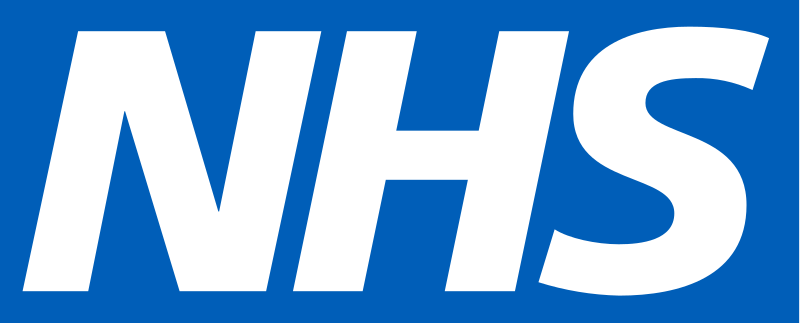When it comes to providing quality healthcare, efficiency and effective resource management are crucial factors. Unfortunately, one risk in community ear, nose, and throat (ENT) services is the possible duplication of appointments. This occurrence not only inconveniences patients but also adds strain to NHS healthcare systems. In this blog post, we will explore the common problem of duplication of appointments in community ENT services and discuss potential strategies to streamline the process, improve patient experience, and optimise the use of healthcare resources.

Understanding the Problem
Duplication of appointments refers to patients scheduling multiple visits for the same ear, nose, or throat-related concern. This arises for various reasons, such as a lack of communication between healthcare providers, patient referrals to different specialists, or limited access to medical records. Regardless of the cause, the
consequences of duplication are significant, leading to increased healthcare expenses, longer wait times, and potential delays to diagnostic results and clinical treatment.
The Impact on Patients: For patients, the duplication of appointments can be frustrating and time-consuming. It may require them to take time off work, arrange transportation, and potentially face additional costs. Furthermore, repeated examinations and tests can cause unnecessary anxiety and may delay the start of appropriate treatment. Patients deserve a streamlined and efficient healthcare experience that minimizes
duplication and focuses on timely diagnosis and treatment.
Addressing the Issue
1. Enhancing Communication: Improved communication between healthcare providers is crucial to prevent duplication. Implementing secure electronic health record systems can facilitate seamless sharing of patient information, test results, and treatment plans. This can be challenging in an environment where multiple different patient administration systems are used across providers and made more challenging where varying versions of clinical software are used. Consistent utilisation of nationally available systems, such as NHS Digital’s e-referral service can support consistent information sharing and communication.
Enhanced communication can be achieved through integration of provider appointment rota where shared visibility of joint clinics can support integration. This can essentially provide one stop appointments for diagnostics and care.
Improved communication ensures that all relevant providers are up-to-date and can make informed decisions without the need for redundant appointments.
2. Care Coordination:
Establishing strong care coordination protocols between primary care physicians and ENT specialists can significantly reduce duplication. Clear guidelines and referral pathways ensure that patients are directed to the appropriate specialist from the outset, minimizing the need for multiple appointments.
One way this can be achieved is through the publication of agreed referral management guidelines which provide clear and documented clinical management protocols for common Ear, Nose and Throat conditions. Care coordination can then be strengthened further when referral management guidelines are built into single point of access for clinical triage protocols which can not only streamline patient referrals into the right place first time but also provide systemic feedback and education to referring clinicians.
Establishing direct listing protocols between community ENT clinicians and hospital surgeons is fundamental to reducing unnecessary duplication of outpatient appointments. Although difficult to achieve until trust between providers has been established, the impact of direct listing protocols significantly improve time and cost for patients aswell as releasing much needed hospital consultant and facilities resource which can then be focused upon surgical and cancer care.
When considering care coordination it is important that Ear, Nose and Throat providers consider all subsequently affected specialities when planning and documented care pathways to ensure a reduction in duplication. Audiology and Radiology departments and a number of allied specialities will be impacted by changes to ear, nose and throat services. Clear coordination of care across all affected specialities within the pathway is required to reduce duplication.
3. Patient Education: Educating patients about when to seek an ENT appointment can empower them to make informed decisions and avoid unnecessary duplication of attendance within primary care, community clinics and Accident/ emergency or urgent care. Patient information should provide clear guidelines on common symptoms including when it’s appropriate to self-manage conditions versus when to seek advice from a medical professional. Meaningful information can also include when it’s appropriate to seek advice from a pharmacist which can also promote self-care and use of over the counter medication where appropriate.
In addition to patient leaflets and information provided verbally during consultations, educational videos can also strengthen patient’s confidence in knowing when to self-manage conditions through visual demonstration of prevention techniques or application of medications, for example how to stop a nosebleed.
Telemedicine: Embracing telemedicine can revolutionize community ENT services by allowing remote consultations, virtual follow-ups, and secure messaging systems. Telemedicine can reduce the need for physical appointments while still providing effective care, particularly for routine check-ups or minor concerns.
The benefits delivered by applying standard telemedicine approaches to replace face to face ENT appointments prior to diagnosis may be limited due to the internal nature of ear, nose and throat structures. When however, digital otoscopes/ nasoendoscopy images and videos are introduced, remote review can include the necessary clinical information to accurately assess chronic disease follow up and potential incidental findings without the need for appointment duplication.
Improved Patient Appointment Systems
Implementing efficient appointment scheduling systems, both at the provider and healthcare system levels, can help minimize duplication. Structured appointment management software systems that considers patient history, specific clinical pathways and urgency with monitored waiting list functionality is imperative to avoiding duplication. These systems when integrated or used in conjunction with capacity planning systems which support the management of available specialists and facilities reduce wait times, and prevent unnecessary duplicate appointments.
Routine appointment scheduling and capacity planning system that fundamentally incorporate appropriate response to patient access, communication and additional needs, for example double appointments, attendance of interpreters, early or late appointments support the minimisation of duplication as well as approving attendance rates.
4. Utilising NHS family providers
There has been a change of heart regarding independent sector providers delivering NHS services over the past 2 years. The independent sector has been seen supporting hospitals to reduce backlogs and waiting times. There is however, a risk that some providers who are not part of the NHS family may contribute to duplication of appointments.
When commissioning Ear, Nose and Throat community services, it is important for commissioners to engage independent healthcare providers who can evidence relevant knowledge and experience of NHS service delivery and can demonstrate previous examples of collaborative working with NHS hospital trusts and allied specialties through testimonials. The selection of qualified providers will ensure measures are implemented to avoid duplication of appointments.
Conclusion
Duplication of appointments in community ENT services poses challenges for both patients and healthcare providers. By addressing this issue proactively, we can streamline care, improve patient experience, and optimize the utilization of healthcare resources. Enhancing communication, promoting care coordination, patient education, embracing telemedicine, and implementing efficient scheduling systems are key steps towards a more streamlined and effective community ENT service. Together, we can make strides in reducing duplication and ensuring that patients receive the care they need, when they need it, without unnecessary redundancy.
If you would like more information on how to streamline Ear, Nose and Throat Services please reach out to us via email at anna.bernard@nhs.net or Kieran.mchugh6@nhs.net


